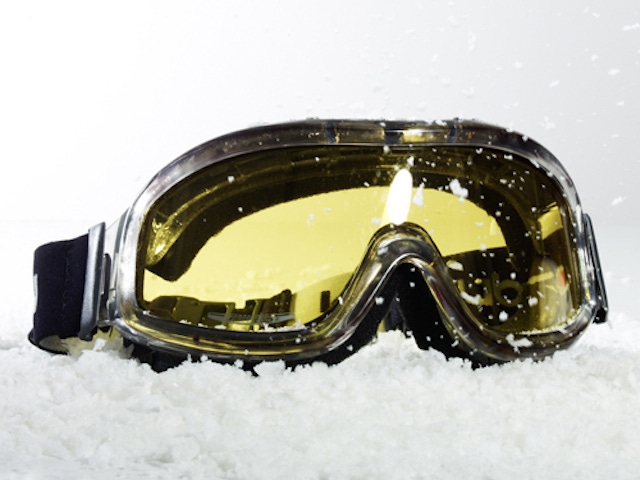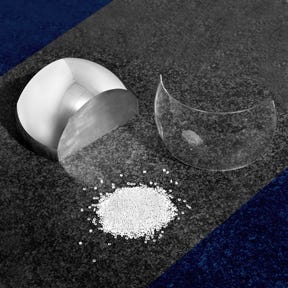When ABCO Tool & Die Inc. started in business nearly 40 years ago, the company was your typical mold builder. However, it then received an opportunity from one of the major manufacturing companies in the state of Massachusetts: Polaroid.
July 21, 2014

When ABCO Tool & Die Inc. started in business nearly 40 years ago, the company was your typical mold builder. However, it then received an opportunity from one of the major manufacturing companies in the state of Massachusetts: Polaroid.
"We started off doing some molds for the various camera parts for that company, but eventually they began asking us to do molds for lens parts," explained David Bourque, president of ABCO. "We worked on the optical components and developed our expertise until we got really good at making molds for optical parts. That work evolved until it became our specialty and now it's what we do. And there are very few of us that can do this type of optical mold work."
Building specialty molds for molding optical products requires a number of unique technologies and processes to achieve what is needed to mold optically correct lenses, face shields and other types of protective eyewear. "We've developed a lot of proprietary processes and technologies for the demanding types of optical products we are enlisted to produce," Bourque said.
|
Steel optical mold insert and resin with molded lens. |
The process to produce a mold for optical parts involves a number of steps. First, explains Bourque, "If you have an optical product you must have an optical product design. The world of optics isn't known by most engineers, who often believe that designing a designing a clear optical part is like designing any other clear polymer part."
However, it's not quite that simple. Bourque explained that in optical parts, light is passing through the lens, which is entering the eye, but as the light goes through the plastic there cannot be any distortions from the mold or molding process. "Any imbalances in the lens itself and the wearer of the product could experience fatigue or headaches," he said. "Distortion in the lens may cause perception problems."
Next, the designer must decide what geometric shape is required for the optical lens. The shape of the lens is determined by the function of the lens. For example, a protective face shield for a firefighter is typically conical that is designed to be worn close to the face. "Firefighters wear these face shields for an hour or more so it had better be good and clear because it can save a life," Bourque said. "Face shields for fighter pilots also must be of a shape that enables clarity through the entire lens in all directions."
Some industrial face shields are cylindrical in shape and provide general coverage. A toric shape - like a football shaped with a cut-out segment - is another shape for optical lenses. Face shields for sports applications are critical and some require what Bourque calls "ballistic performance" to provide protection when a hockey puck hits a face shield, for example.
Three other considerations in the design phase is how the lens will be used, how it will be worn, and where the product will be sold. "Every country has its own standards, so if your product is going to be sold in the U.S. or in Europe or in Canada, each has its own standards that we have to achieve when determining optical mold design," Bourque said. "Answering these questions with an optical designer is the first thing we do before we even think of making a mold."
Designing and building the mold
Now that the shape of the lens, how it will be used and standardsi it needs to meet have been determined, ABCO can begin to design and build the mold. The critical features of the lens design are the optical insert break-out, the parting line and the gating. "Gating the lenses and shields at proper place results in a good optical part," Bourque said. "A gate at the wrong place can impact the optical clarity if material has to flow around obstructions."
Depending on geometric shape, there is a clear 'aperture' or the amount of space needed to look through without distortion, which means the insert line might be very near the edge of the lens. Also required is adjustability, said Bourque. "The front and back insert may need a thickness adjustment capability and many times you have to adjust this, so you need the proper wall thickness," he said. "Additionally, the thermal requirements of the mold must be considered. Thicker parts mean more cooling is needed."
|
Goggles with lenses made from a mold by ABCO Tool. |
The last thing that ABCO looks at are any secondary operations that have to be performed post-molding. For example, some lenses have to be hard coated to withstand abrasion, or covered with an anti-fog coating. "In that case, we might have to design a 'hanger' on the part to hold the lens in the proper orientation so the liquid coating material drains off smoothly during the coating operations, without running and disfiguring the lens," Bourque explained.
Now that the core and cavity inserts are built, the next step for ABCO is to polish the inserts to achieve a mirror finish on the steel - far beyond the typical no. 1 finish for highly polished cores and cavities.
The polished metal needs to be <100 angstroms, which is the physical measure of the surface finish. "We're polishing the steel to be basically a mirror," said Bourque. "The geometric shape has to have geometric form and figure accuracy - no wave or shape changes in it."
The method ABCO uses to polish the cores and cavities is unique to each geometric shape. This is such a critical part of the mold build that ABCO had to develop and build its own equipment that allows for performing these extremely delicate tasks, including a piece of equipment to allow the company to perform what Bourque called 'conformal polishing.'
"Not that we want to build our own equipment, but each lens geometry is different," Bourque explained. "Some lenses are spherical, but once you go up the geometric ladder to more complex shapes such as the toric it gets more difficult. Each one has a unique constraint on how it's processed. Designers want to design products that are more form fitting for the user, but how do we build this mold and polish it to get what they want? We've developed the equipment and processes, perfected it and now even the toric is relatively straightforward for us."
The vast majority of the lenses and face shields are molded in polycarbonate, because of its optical clarity and impact resistance. Sometimes a customer need dyes or additives that can affect the performance of the material, such as a laser dye to prevent an incident from a laser pointer. "In that case we have to take into account the caustic effects of these dyes and add a coating to the optical mold inserts," Bourque said.
ABCO has made molds for a huge range of products - everything from standard eyewear, to sports goggles, visors, face shields, even security domes for cameras. There are also many types of reflectors that require lenses, and 'heads up displays' for the automotive industry. "The mirrors have a unique surface on them in that the parts are molded then mirrorized," Bourque said. "We can produce a very accurate surface finish to provide these head-up displays."
While Bourque admits that the niche the company has captured over the years is not an easy one, it's one he enjoys because of the challenges. "The really easy stuff has gone offshore, so there aren't many companies left that build the molds for this really difficult work," he said. "But it's the challenges of this business that makes it interesting and fun."
About the Author(s)
You May Also Like






